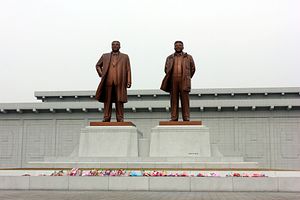Some stories that you may have missed this week:
North Korea and Laos consult on security. The security ministries of North Korea and Laos, two communist states, met in Vientiane and concluded an agreement. NK News has more on the deal, highlighting concerns that the Lao may be violating their obligations under the United Nations Convention Against Torture if the deal includes, as some suspect, a provision to repatriate North Korean defectors in Laos. Additionally, Joshua Pollack of the Royal United Services Institute points out on Twitter that, depending on what’s in the agreement, Laos may be on thin ice under the new sanctions against North Korea pursuant to United Nations Security Council Resolution 2270 (UNSCR).
Enforcing new North Korea sanctions. In case you missed it, the Philippines became one of the first countries to end up enforcing one of the more stringent sanctions requirements against North Korea under UNSCR 2270. Philippine authorities impounded the Jin Teng, a suspected North Korean vessel, at Subic Bay. The vessel will be inspected by United Nations inspectors. Under new sanctions, UN member states are required to investigate North Korea-bound vessels, a change from earlier sanctions that mandated investigation only where probably cause existed to suspect the transfer of prohibited contraband to the Hermit Kingdom.
How North Korea gets around sanctions. If you’ve got the time, the UN Panel of Experts on North Korea has released its latest report, which stands at a hefty 300 pages. The report presents a range of evidence on how North Korea has found its way around international sanctions in the past. The Panel finds that North Korea “has been effective in evading sanctions and continues to use the international financial system, airlines and container shipping routes to trade in prohibited items.”
Anti-aircraft missile becomes anti-ship. Raytheon’s supersonic SM-6 Standard Missile has successfully sunk a target ship in testing, marking an important milestone in the platform’s ongoing repurposing for naval warfare. The SM-6 sank the decommissioned USS Reuben James. The SM-6 and other platforms will help the U.S. Navy realize its “distributed lethality” concept, which involves a significant bolstering U.S. naval firepower. Speaking of distributed lethality, you should check out a series on the concept at the Center for International Maritime Security (CIMSEC), featuring a range of observations and analysis on the utility of the concept. (Disclosure: I’m CIMSEC’s New York chapter president.)
Offense or defense in the South China Sea? USNI News has acquired an unclassified letter from U.S. Director of National Intelligence James Clapper to Senator John McCain that sheds some light on how the U.S. views recent Chinese actions in the South China Sea. The important takeaway is the United States isn’t buying China’s explanation of its moves in the South China Sea, including the positioning of surface-to-air missile systems, placement of over-the-horizon radars, and construction of airstrips, as defensive. From Clapper: “Based on the pace and scope of construction at these outposts, China will be able to deploy a range of offensive and defensive military capabilities and support increased PLAN and CCG presence beginning in 2016. Once these facilities are completed by the end of 2016 or early 2017, China will have significant capacity to quickly project substantial offensive military power to the region.”
As always, do check out the podcast here at The Diplomat. On the latest episode, Prashanth Parameswaran and I discuss recent events in the South China Sea, including Chinese moves in Jackson Shoal and the deployment of a U.S. Navy carrier group.

































